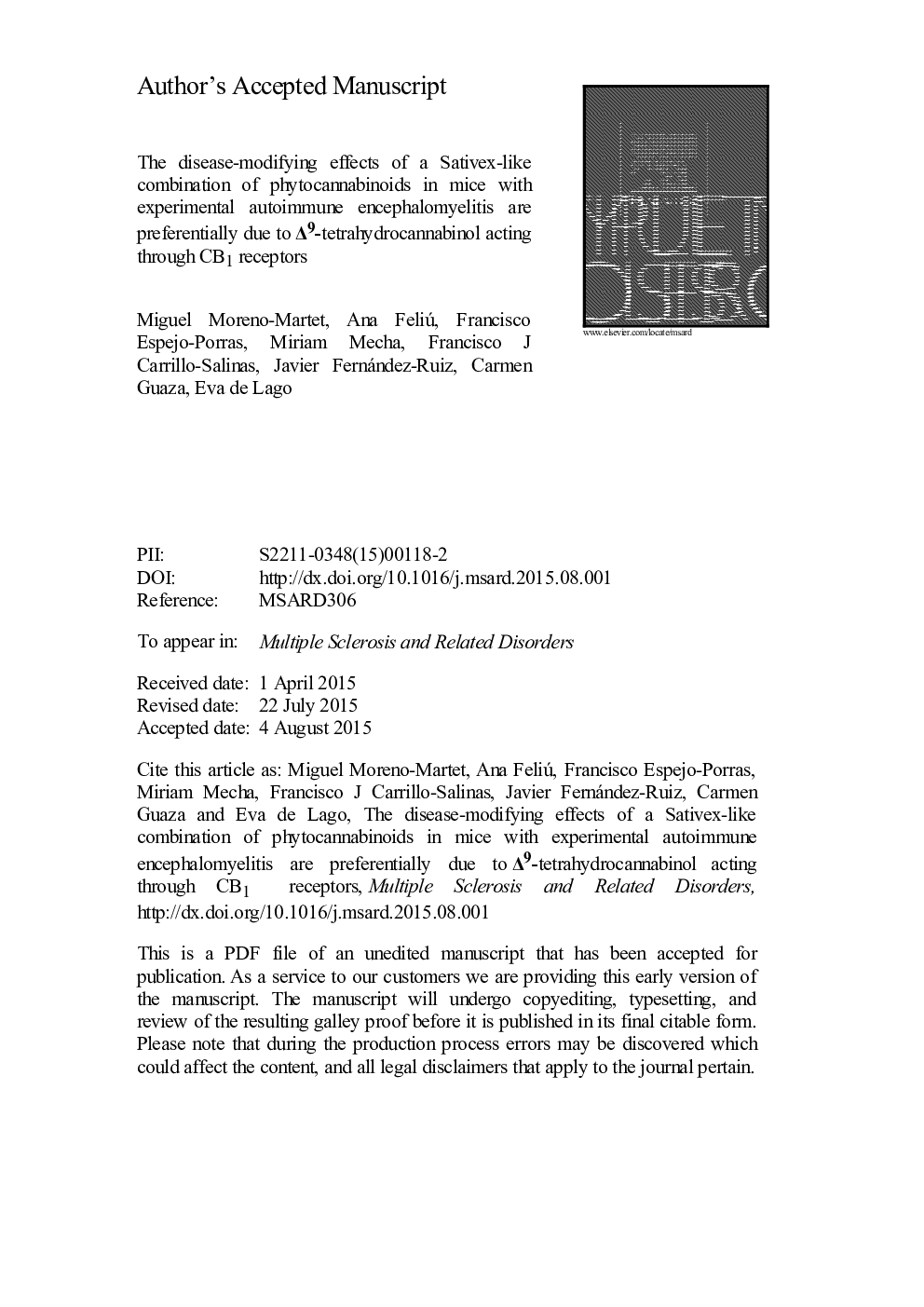| Article ID | Journal | Published Year | Pages | File Type |
|---|---|---|---|---|
| 5912638 | Multiple Sclerosis and Related Disorders | 2015 | 27 Pages |
Abstract
Sativex®, an equimolecular combination of Î9-tetrahydrocannabinol-botanical drug substance (Î9-THC-BDS) and cannabidiol-botanical drug substance (CBD-BDS), is a licensed medicine that may be prescribed for alleviating specific symptoms of multiple sclerosis (MS) such as spasticity and pain. However, further evidence suggest that it could be also active as disease-modifying therapy given the immunomodulatory, anti-inflammatory and cytoprotective properties of their two major components. In this study, we investigated this potential in the experimental autoimmune encephalitis (EAE) model of MS in mice. We compared the effect of a Sativex-like combination of Î9-THC-BDS (10 mg/kg) and CBD-BDS (10 mg/kg) with Î9-THC-BDS (20 mg/kg) or CBD-BDS (20 mg/kg) administered separately by intraperitoneal administration to EAE mice. Treatments were initiated at the time that symptoms appear and continued up to the first relapse of the disease. The results show that the treatment with a Sativex-like combination significantly improved the neurological deficits typical of EAE mice, in parallel with a reduction in the number and extent of cell aggregates present in the spinal cord which derived from cell infiltration to the CNS. These effects were completely reproduced by the treatment with Î9-THC-BDS alone, but not by CBD-BDS alone which only delayed the onset of the disease without improving disease progression and reducing the cell infiltrates in the spinal cord. Next, we investigated the potential targets involved in the effects of Î9-THC-BDS by selectively blocking CB1 or PPAR-γ receptors, and we found a complete reversion of neurological benefits and the reduction in cell aggregates only with rimonabant, a selective CB1 receptor antagonist. Collectively, our data support the therapeutic potential of Sativex as a phytocannabinoid formulation capable of attenuating EAE progression, and that the active compound was Î9-THC-BDS acting through CB1 receptors.
Keywords
CFAPBSAEAMOGSativexTMEVFAAHPPAREAEcomplete Freund’s adjuvantanandamideexperimental autoimmune encephalomyelitisTherapeutic effectsFatty acid amide hydrolaseCNSBlood–brain barrierBBBcentral nervous systemCSFCerebrospinal fluidPhosphate-buffered salineMultiple sclerosisTheiler's murine encephalomyelitis virusCUPIDmyelin oligodendrocyte glycoproteinCB1 receptorsCB1 receptorCB2 receptorperoxisome proliferator-activated receptorcannabinoid type-1 receptorCannabinoid type-2 receptor
Related Topics
Life Sciences
Biochemistry, Genetics and Molecular Biology
Genetics
Authors
Miguel Moreno-Martet, Ana Feliú, Francisco Espejo-Porras, Miriam Mecha, Francisco J Carrillo-Salinas, Javier Fernández-Ruiz, Carmen Guaza, Eva de Lago,
